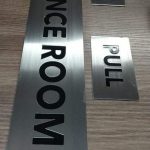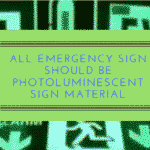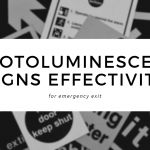
Sign maker
Sign makers have lengthy sought a means to enhance sturdiness and aesthetic appeals and minimize the labor-intensive actions connected with welding, taping, and fastening. Today’s adhesives can structurally bond metals to plastics with distinct design, manufacturing, and price benefits.
Structural adhesives are an alternative to welding and mechanical bolts for signs industry fabrication.
- How Solid Are Structural Adhesives?
The shear stains these days’s structural adhesives are from 1,000 to 4,000 pounds per square inch (psi) — resulting in joint stains similar to a lot of welding and conventional fastening approaches when those joints are properly made. Additionally, adhesives preserve their toughness over a vast temperature array (– 40 to 170 degrees C). In addition, unlike screws, screws, or rivets that concentrate the anxiety at the factor of attachment, adhesives spread out the stress over the entire bond location. - Which Products Can Adhesives Sign Up With?
Lots of sign maker have concerns or are not aware about which materials can be bound utilizing adhesives. Utilizing today’s strategies and items, producers can make use of adhesives to join aluminum, stainless-steel, cold-rolled steel, brass, copper, and most other steels. Further, adhesives can bond ABS, acrylic sign, polycarbonate, foam, trim caps, wood, and also fiberglass, as well as they can be utilized with the majority of factory-painted steels. - What Do I Need to Learn About Cross-bonding?
When you are cross-bonding, such as joining steel to plastic, it is essential to speak with a glue distributor to make sure that you use the appropriate application.
Since extreme differences may exist in the expansion coefficients of metal and plastic, substrates may increase and get at various rates with temperature level modifications. It is necessary to keep to consider mind: First, the style has to be flexible enough to accommodate the expansion. Trying to completely limit a structure from broadening can produce huge anxieties that no attachment technique can tolerate. If area is permitted for parts to bow as well as flex, then the thermal expansion is fit, somewhat.
The 2nd aspect is that the adhesive as well as substrates have to be strong enough to tolerate the tensions that the thermal growth produces. Tensions of several thousand psi are not uncommon, also in a properly designed framework, so the sticky picked have to have the ability to endure stresses of these levels. - When Are Adhesives Not Appropriate?
Often an adhesive is not appropriate. The general rule is to use adhesives only where the joint layout is filled in shear or compression, not peel or tension. Locations like butt joints or T joints do not always enable an enough overlap for the sticky to bond effectively. In some cases it is quicker and easier to construct these designs by welding or attachment. - Which Adhesive Functions Finest on Which Surface?
An adhesive’s chemistry is a crucial sign in identifying which substrates it can bond. It is essential to understand the adhesive’s appropriate job time, fixture time, as well as managing toughness. Adhesives are based on polymers made from acrylics, urethanes, or epoxies, and each has distinct residential or commercial properties:
- Polymer sign -based adhesives are specifically efficient in bonding steels. They are extremely hostile and need marginal surface area preparation. Acrylic sign adhesives function well on plastics, yet since they are so aggressive, they may trend or stress-crack some plastics.
- Epoxies can be made use of on steel, plastic, concrete, timber, as well as foam. Since epoxy-based adhesives have a tendency to have a slow-moving treatment price and become fragile at low temperature levels, acrylic sign and also urethanes are in some cases much better choices when manufacturing process timing is important or when components will certainly be utilized in extremely low temperature levels.
- Urethanes are an excellent option for bonding plastics, wood, and also foam. Urethanes do not stick well to steel without a primer, however, so they are not utilized as usually for steel bonding.






